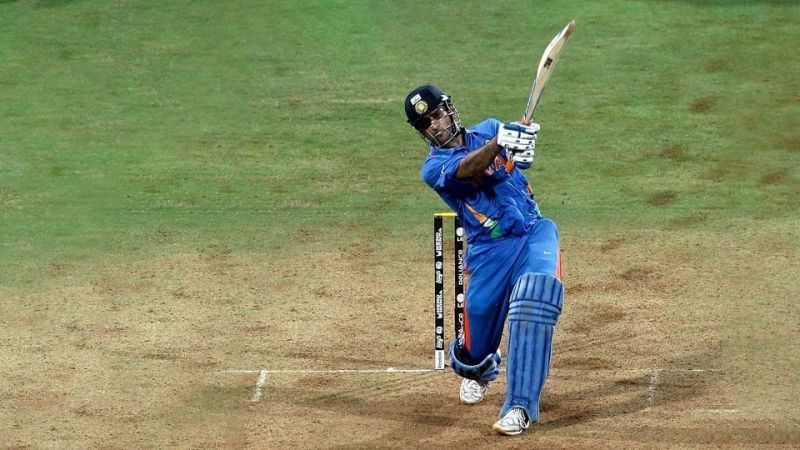
Once upon a time in Mumbai ft. MS Dhoni
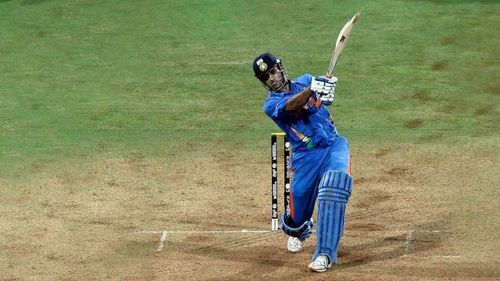
On 2nd April, 2011, MS Dhoni shouldered the responsibility of giving countless hopeless cricket romantics the fairytale ending they craved. India, prior to that evening at the Wankhede Stadium, had not won a 50-over World Cup since 1983.
Understandably, only one generation of cricket fanatics had seen Kapil Dev’s fearless bunch of cricketers in action when they trumped the mighty West Indies. For the rest, that remained a fable – one that they’d not only heard about but also somehow dominated each cricketing conversation to have ever existed.
For them, the World Cup final in 2011 represented their own watershed moment. Not because it was perhaps when a few top-notch Indian cricketers reached their zenith, but also because it was intended to signify the completion of the much-publicized ‘process’ – one that had seen exceptional players fall by the wayside.
As MS Dhoni and Kumar Sangakkara walked out for the toss on a characteristically sultry afternoon in Mumbai, the initial bravado morphed into a tinge of nervousness.
India, for all that they had achieved till 2011, still seemed to harbor a tincture of stage fright which, considering their 2003 World Cup final debacle, wasn’t surprising.
Thus, when MS Dhoni launched the coin miles up in the air, there was hushed silence across the ground. That neither MS Dhoni nor Kumar Sangakkara heard/recollected what the latter called only added to the theatre.
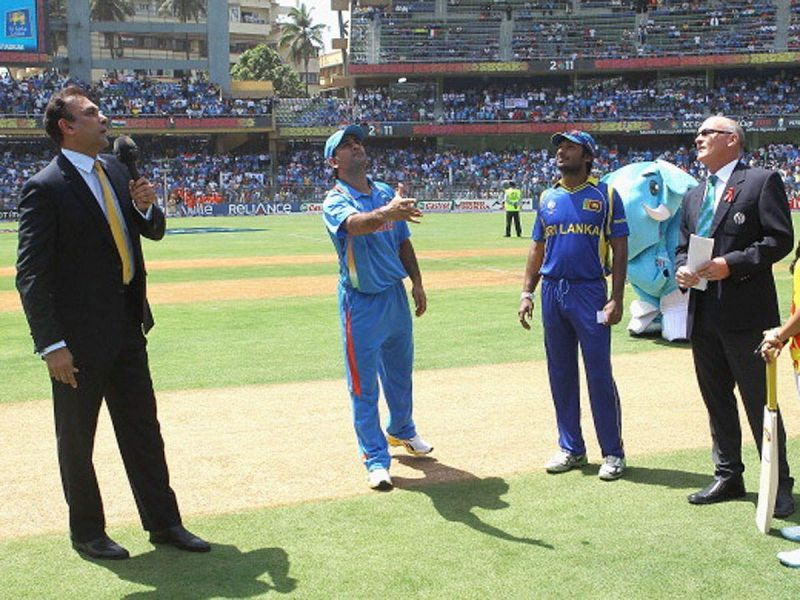
In the most improbable of outcomes, MS Dhoni was then asked to flip the coin again, before the Sri Lankan captain ultimately consigned him to the fate of batting second. Johannesburg all over again then, eh?
Over the course of the next hour though, Zaheer Khan - the bowler who had been labeled the pantomime villain for his wretched start in 2003 - carved open the contest. The pacer accounted for a string of maidens before outwitting Upul Tharanga as the batsman edged an out-swinger to Virender Sehwag at slip.
The next few overs saw Kumar Sangakkara and Tillakaratne Dilshan rebuild, with both not facing too many problems. However, just as the latter tried to increase the tempo, he perished to Harbhajan Singh. Interestingly, the Sri Lankan got out playing the sweep shot, which had been one of his more productive strokes. World Cup finals are really funny, aren’t they?
Dilshan's dismissal brought Mahela Jayawardene to the crease. The current Mumbai Indians coach, along with the Rajasthan Royals’ director of cricket, stitched together a 62-run stand. However, just as Indian brows began to furrow, MS Dhoni used his trump card in Yuvraj Singh to rip open the game.
The spinner got the better of Sangakkara and considerably dented the Islanders’ charge. Or, at least, that is what a major chunk of the Indian population thought. Jayawardene, meanwhile, had slightly different ideas.
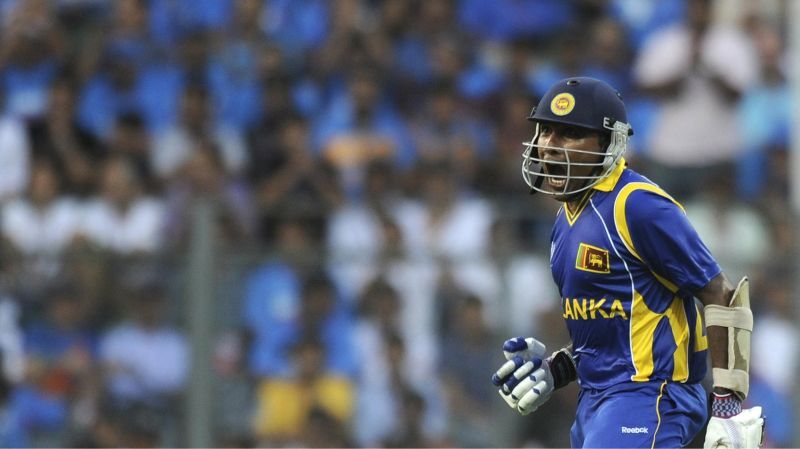
Mahela Jayawardene conjured the most (arguably) magical innings by a Sri Lankan in World Cup cricket. He caressed and creamed his way to a sumptuous ton and left the jam-packed Wankhede Stadium gaping in awe. In fact, it might not be a stretch to suggest that certain sections of the pro-India crowd might’ve also applauded. It was that good.
The knock, coupled with Thisara Perera’s pyrotechnics, propelled Sri Lanka to a total of 274/6 – a mountain that seemed pretty daunting for India and MS Dhoni to end their ODI World Cup hoodoo.
India got off to perhaps the worst possible start when Virender Sehwag was trapped plumb in front off just the second ball of the innings. Immediately, billions traversed an unwanted path down memory lane, and images of Sachin Tendulkar being dismissed early in 2003 began flowing through each household.
Additionally, the Master Blaster, who had come into the final on the back of a charmed innings against Pakistan, was removed by Lasith Malinga in the 7th over. At that point, India were 31/2 and had to rely on a World Cup greenhorn (Virat Kohli) and a batsman (Gautam Gambhir) who hadn’t set the world ablaze.
Against all odds, the pair buckled down and kept the Sri Lankans at bay until the 22nd over, for that was when Dilshan pulled off a stunning catch to dismiss Kohli. Instantly, the entire audience at the Wankhede Stadium glanced over to the Indian dressing room, hoping to see Yuvraj Singh stamp his authority on another 2011 World Cup game.
Yet, to everyone’s surprise, the burly figure of MS Dhoni, who had struggled for runs throughout the World Cup, walked down the stairs.
MS Dhoni walked out to bat with the score reading 114/3
On that evening, as MS Dhoni set foot in the arena, there seemed an aura invincibility about him, suggesting that the captain was destined to make a mark.
More importantly, MS Dhoni’s gladiatorial entry signalled great intent, hinting that he was about to change all narratives (past, present and future) about Indian cricket.
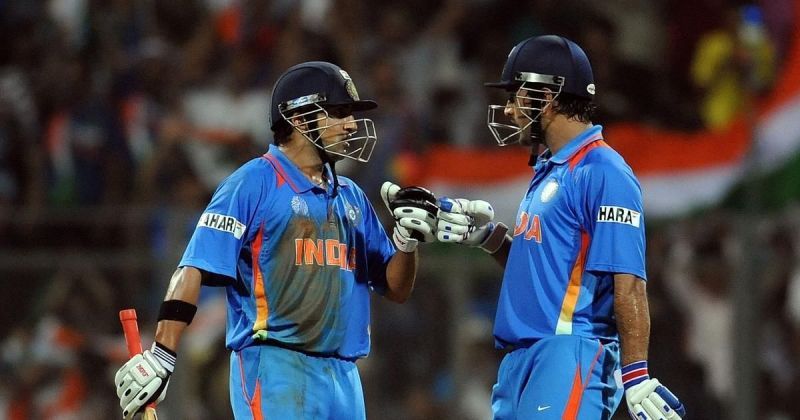
MS Dhoni took his time to settle down, as always. During that phase, Gautam Gambhir ensured that the Indian skipper was allowed the time to do so. The former Kolkata Knight Riders captain kept using his feet to the spinners and even opted for the aerial route against Nuwan Kulasekara.
Though those shots would’ve gone down in the scorebook as just boundaries, they ended up shaping the run chase. In fact, Gambhir was so clinical that by the time he was cleaned up by Thisara Perera, he had effectively won India the World Cup.
Other sub-plots, meanwhile, revolved around MS Dhoni’s propensity to rise from the ashes like a phoenix. And of course Yuvraj Singh’s remarkable tournament, which would’ve felt incomplete without a tangible batting contribution in the final.
The game meandered along, although for a better part of the final 10 overs, there seemed an inevitability about the result. After all, two of India’s best finishers were at the crease. And both had their own chronicles to write, especially after what had transpired in previous World Cups.
Yuvraj was looking to erase the demons of 2003, whereas MS Dhoni found himself in the enviable position of becoming the only captain to win the T20 and ODI World Cup. And boy, didn’t they do that!
Despite the overall confidence in the air, just before the 46th over, there was the slightest bit of trepidation among the Indian faithful. India were largely in control, but still required 27 off the final four overs.
Ideally, the target wouldn't have made batsmen of the ilk of MS Dhoni and Yuvraj Singh fret. In a World Cup final, though, nothing could be taken for granted.
The first ball of the 46th over fetched Yuvraj a single, meaning that MS Dhoni was back on strike, batting on 71* off 72 balls. Kulasekara ran in to bowl. The ball, like a saucer, landed on a length just outside off stump and MS Dhoni clattered it past mid-off and extra cover.
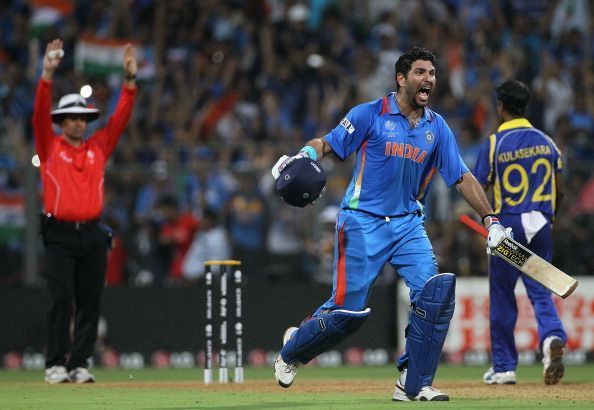
A few balls later, Yuvraj crunched a pull stroke, meaning that the equation, which seemed a tad perilous before the 46th over, was reduced to 16 runs off 18 balls.
The threat of Lasith Malinga, though, still loomed large. Four years ago, with Sri Lanka staring down an even greater barrel, the fast bowler bagged a double hat-trick (4 scalps in 4 balls) against South Africa. Surely, it couldn’t happen against India at the Wankhede Stadium, could it?
Fortunately for the Indians, their bated breath became immense euphoria as MS Dhoni tucked the ball off his pads twice, picking up two boundaries in the process. Suddenly, the moment the nation was waiting for was upon them.
Again, like a couple of overs ago, Kulasekara was tasked with keeping MS Dhoni quiet. He speared another length delivery on middle and off stump, allowing MS Dhoni to go deep into his crease. And then everything just clicked, like it was always meant to.
While “MS Dhoni finishes it off in style” has become a shade cliched since, one feels the aforementioned seven-word catch-phrase personified the Indian skipper completely.
Before it and after it too, MS Dhoni finished off games for fun. Most tellingly, he finished off the game that mattered. The fixture has defined an entire generation, and has told millions across the country that sport or even life isn’t about how you start as long as you finish it like MS Dhoni.
But there was a lot more to the World Cup campaign that transpired in 2011. Though MS Dhoni, courtesy his vivid coup de grace, has etched himself into cricketing folklore, India’s journey to the pinnacle was just as inspiring.
Prior to the tournament, Virat Kohli had, through sheer weight of runs, penciled himself down as a prospective world-beater. Yusuf Pathan, owing to a belligerent ton against South Africa, had made his capabilities known to the world. Sachin Tendulkar, one of India’s greatest cricketers, was looking to adorn his cricketing journey with the crown that had eluded him.
Yuvraj Singh, meanwhile, had just about managed to sneak into the eleven. At that point, there were plenty of raised eyebrows, for he hadn’t performed to his usual standards. However, Yuvraj always finds a way, and he unlocked his potential as a genuine all-rounder – one that powered India to the title they craved.
Virender Sehwag's announcement that he wanted to bat 50 overs before the tournament opener and the subsequent 175* against Bangladesh also hold a special place in Indian psyche. Moreover, the sight of Munaf Patel and Zaheer Khan emerging from their relatively barren patches to prove their worth was quite satisfying.
As far as the competition was concerned, there were numerous obstacles India had to hurdle over, whether it be the tied game against England or the last-over heist Robin Peterson masterminded at Nagpur.
Throughout it all, India rarely missed a beat as they, much like MS Dhoni, soaked up all the pressure. At the end of it, they were vindicated too.
Despite reminiscing India’s second World Cup conquest 10 years later, it seems all of these events unfolded yesterday. Or, according to timelines, it might even be something that has taken place today.
The MS Dhoni six over long-on, the heroic Gautam Gambhir rescue act, the irresistible bowling display by Zaheer Khan, and the ebbs and flows experienced by those at the Wankhede – each seems so far, yet so close.
All those years ago, when MS Dhoni strode out for the toss alongside Sangakkara, one would’ve been forgiven for envisioning doomsday, especially after being asked to field first again.
But the Indian cricketers, led by MS Dhoni, had the wherewithal to script their own fairy tale in an environment that was designed to drain individuals (literally and figuratively). That it intertwined itself with billions of other stories only enhanced the spectacle entirely.
Once upon a time in Mumbai, things were pretty good, weren’t they?
Also Read: MS Dhoni, Sam Curran and the dying art of finishing